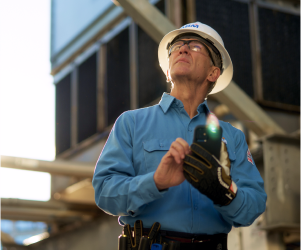Connecting Continents
As the Middle East emerges as a global economic leader, new connections and development projects are opening up a whole new world of opportunity, as one gargantuan civil engineering project demonstrates.
Al Noor City, meaning ‘City of Light’, led by Al Noor Holding Investment, is a US$200 billion project not only making engineering history but also involving social development and boosting emerging economics in Middle East and Africa. “My plan is simple. I want to build a trans-continent bridge across the water, connecting Yemen and Djibouti,” explains Sheik Tarek Bin Laden, owner of Al Noor Holding Investment. “We are planning to connect not just two cities, however, but two continents and this will revive an entirely new trade route through Africa, Middle East and beyond.”
Where does the money come from?
“BRIC investment opportunities still exist in the market but they are no longer nascent the market and institutional investors are seeking the next wave of opportunity. We believe the next blooming exists in the Middle East and Africa Continents” Mohammed Ahmed Al Ahmed, CEO of Al Noor Holding Investment believes. “With the support of both the Djibouti and Yemen government, we’re now ready to talk to potential investors about the opportunities that exist within the project and have already received encouraging responses from leading international firms. We are interested in developing many forms of investment vehicles including early stage infrastructure.” Up to date, over US$50 billion from investors in Saudi Arabia, Gulf countries, Europe and China has been collected. A list of top US companies are already involved, and several build-own-transfer contracts are expected to be used for the infrastructure of the entire project. “Funds will be no constraint!” he concluded.
Twin Cities
|
|
Construction on Al Noor City is scheduled to commence construction in Q2 2009, with the master plan for completion of 15-year timeframe. The initial stages of the project will take place in Djibouti, followed by bridge engineering and Yemen transformation. Al Noor Alliance, a group of about 50 companies including India’s L&T and Punj Lloyd, has been formed to manage the project. “For the cities, we plan to set up a number of developers, in a similar model to Dubai” Bin Laden reveals. The project aims to foster economic development and partnership between African and Middle East, and to creating a regional hub for the world. Harbor ports, transportation systems, logistics infrastructure and business districts will therefore constitute crucial components of the proposed venture. However, although the business and transformation master plan has been developed, many issues are yet to be resolved. For instance, Yemen and Djibouti, have two very different political and legal systems. “Both Al Noor cities will be developed as unique free-trade zone and will have its own law and administration system.” Bin Laden commented. External infrastructure may also be hurdle, as some experts also point out, unless Djibouti gets better transportation connections to the rest of Africa; and Yemen to the West-Asia, the mere construction of the two Al Noor cities and the bridge will not help achieving the desired objective.
Al Noor Yemen
Al Noor Yemen is located on the south-western coast of Yemen where at the point the Gulf of Aden meets the Red Sea. With a total development area of 1500 km2, Al Noor Yemen city comprises seven districts: International Business City, Resort & Leisure, Airport & International Logistics Precinct, Harbor Industry, Residential Zone, R&D Precinct and “Technopolis”.
Al Noor Djibouti
|
|
Mirrored by a 1000 km2 space located at the Horn of Africa (see Land Use Box), Al Noor Djibouti will be indeed a futuristic program that the new town is mainly comprised of two districts: Wisdom City and Leisure City. On the northern part towards Eritrea, Wisdom City will provide accesses via railways and expressways from Yemen. It also aims to be a world-leading “learningorientated community”. Similar to Al Noor Yemen, the Djibouti city will also build free trade zones, a technology park, R&D campuses and business districts to house the world’s leading commercial entities, forming a hi-tech built international metropolis. Bin Laden is already pushing several international banks to populate a financial zone and hopes to promote Djibouti as an Africa financial hub. The “Leisure City”, located at southern district will provide custom-built residential and tourist areas for Djibouti. This green zone will preserve the natural ecology of the area, with recreation facilities such as resorts, golf courses and water-parks.
Within Wisdom and Leisure City, a “Green Buffer Zone” is envisaged to maximize the preservation of natural topography by creating a central park to provide abundant green spaces. A “Blue Network”, an underwater system with lakes will use the seawater undercurrent he shore to nearby harbor surroundings.
Walking on the Sea
|
|
Central to the project, and the lifeline connecting the two twin cities is the “Bridge of Horns”, an ambitious construction that will be the world’s longest bridge. Designed by a Danish bridge engineering firm COWI, it will traverse the Red Sea, with an intermission at Island of Perim. It will be approximately 28.5 km long and carries a six-lane highway with four light rail lines, as well as oil and water pipeline. Once operational, it is expected to handle up to 100,000 cars and 50,000 rail passengers per day. Technologically and practically, the construction of the bridge is a huge challenge. At 28.5 km the bridge will be built with a long girder and suspension span structure. Each of two main suspension spans has to be 2.7 km long to allow large vessels to pass underneath. The causeway is being constructed at a depth of 330 meters, and will be the world’s deepest.
|
|
Obviously, this enormous project will have a significant impact on a global, regional and local scale, and there is a weight of expectation as to how society will benefit from the development. “The goal of the Al Noor project is to create globally integrated cities bringing two continents that deliver a major shift from, not just the economics of Yemen and Djibouti, but the regional economy of the Middle East and Africa and beyond worldwide. We have all ingredients to make this idea a reality” Al Ahmed stated. In terms of social impacts, Bin Laden has stated the disparity between the very wealthy and the poverty is still growing and he believes the vision of these cities can reduce this gap by creating a million jobs. As to the how the ambitious vision of the project can be realised, Bin Laden remains resolutely philosophical. When asked: “Sheik Tarek, it’s a great concept. But it’s still several years away before it becomes operational, isn’t it?” He smiled “Yes, it’s true. But learning to walk on water does really take time, doesn’t it?








